If you’re looking to blind an intruder, you’re going to need a
powerful flashlight, ideally with at least
300 lumens. This level of brightness can cause temporary flash blindness, giving you precious seconds to act. Going even brighter, say 500 lumens, really disorients an attacker, and 600 lumens or more will guarantee you leave them stumbling. Think of beams like laser pointers on steroids—plus, using a
strobe mode can add to the chaos, making it harder for them to adjust. So, grab a
tactical flashlight, scare off your intruders, and if you’re curious about the best models and features, keep going!
Understanding Lumens
Ever wondered what
lumens really mean when it comes to flashlights? Lumens are a measure of the total visible light a source emits, and the higher the lumens, the
brighter the light. But how many lumens does it take to make a flashlight
bright enough for your needs?
Imagine you’re out
camping, trying to find your way back to your tent in the dark. A flashlight with just 120 lumens can do the trick, lighting your path and even providing a self-defense tool in low-light situations. If you need something stronger, 300 lumens can create a brief blinding effect, making it a solid choice for
personal safety.
Now, let’s say you want to feel really secure. Military sources suggest that 600 lumens can induce
temporary disorientation at close range. That’s bright enough to deter any would-be intruder. And if you’re looking to go all out, flashlights with
3000 to 5000 lumens, especially with a
strobe function, can overwhelm an attacker’s vision completely.
In the end, understanding lumens helps you choose the right flashlight for any situation, ensuring you’re
never left in the dark. So, how bright do you need it to be?
Minimum Lumens for Disorientation
When considering the
minimum lumens for
disorientation, it’s essential to understand that even a modest
150 lumens can be effective in
complete darkness, causing an intruder to avert their gaze or close their eyes. Imagine it’s pitch black, and suddenly a
bright light hits your eyes—you’d probably squint or look away too, right? That’s exactly what 150 lumens can do to disorient someone. But if you really want to pack a punch, you should aim for at least
500 lumens. This level of brightness is like a mini sunburst, enough to make someone feel
momentarily blind. It’s not just a “hey, what’s that light?” reaction; it’s more of a “whoa, I can’t see anything!” moment. Military sources even recommend 600 lumens for close encounters, but let’s not get ahead of ourselves. The
Turbo-Strobe mode on some models can further enhance this effect, adding another layer of deterrence.
Even if you’re not looking to blind anyone (save that for the next part), knowing that 150 to 500 lumens can totally throw someone off is pretty handy. It’s like having a superpower in your pocket, ready to disorient someone when you need it. So, don’t underestimate the power of a good flashlight—it’s more than just a tool; it’s a
defense strategy.
Effective Lumens for Blinding
To effectively blind an intruder, you need a flashlight with a minimum of
300 lumens. Envision this: you’re in a dark room, and suddenly, a bright light hits your eyes. You can’t see anything but that glaring light. That’s
temporary flash blindness, and it’s your best friend when facing an intruder.
A flashlight with 300 lumens can
disrupt an attacker’s vision, especially in the dark. Want to up the ante? Go for
500 lumens or more. When you shine that beam directly at their eyes, it’s like a superpower, causing disorientation instantly. Now, if you’re really serious about self-defense, think about a light with 600 lumens. Military folks swear by it for close encounters, and it can
induce temporary blindness, giving you precious seconds to act.
For the ultimate in bright defense, some flashlights offer
3000 lumens or more. Imagine the intruder’s shock when faced with such a powerful beam—they’ll be startled and blinded, increasing your chances of escape.
Impact of Beam Intensity
Understanding the effective lumens for blinding is just part of the equation; the intensity of the beam plays a significant role as well. You might think lumens alone are enough, but how the light is focused can make all the difference when blinding someone. A flashlight with 600 lumens can seem brighter or dimmer depending on its beam focus.
Consider these factors:
- Candela (kcd) Matters: A focused beam with at least 100 kcd is essential for disorienting an attacker.
- Close Proximity: At short distances, 500+ lumens can temporarily blind an intruder, especially in complete darkness.
- Environmental Factors: Ambient light can reduce effectiveness, making a concentrated beam more desirable.
- Higher Intensity: Beams over 3000 lumens can induce temporary blindness, offering you a chance to escape.
- Beam Focus: A focused beam intensifies light, making it more effective in blinding someone compared to a diffused light source.
Imagine facing a threat in your home. The concentrated light cuts through darkness, temporarily blinding the intruder, giving you those precious seconds to act. It’s not just about the lumens; it’s about how that light is delivered. So, when choosing a flashlight for self-defense, remember, beam intensity is your secret weapon.
Role of Strobe Mode
A
strobe mode on a flashlight isn’t just a flashy feature; it’s a powerful tool for
self-defense. Imagine you’re suddenly facing an intruder in your home. Panic sets in, but then you remember your lumen flashlight has a strobe mode. With a quick press, your flashlight starts emitting
rapid bursts of light, creating
disorientation and confusion. The intruder can’t see clearly, their vision impaired, and their balance thrown off. It’s like being hit with a
visual stun grenade.
Flashlights with strobe features send out light at varying frequencies, making it hard for the eyes to adjust. This intermittent lighting keeps the assailant off balance, even with just a few seconds of exposure. And when you’re talking
high lumens—think 3000 to 5000 lumens—the effect is even more dramatic. The intruder is
temporarily blinded, giving you precious moments to act.
Tactical flashlights, specifically designed with dedicated strobe functions, make it easy to activate this mode quickly. It’s as simple as a button press, and bam, your flashlight becomes a self-defense powerhouse. So, don’t underestimate the strobe mode on your lumen flashlight—it could be your best ally in a tight spot.
Tactical Flashlight Features
When choosing a
tactical flashlight, you need to keep essential features in mind, like a compact, rugged design and a minimum of 120 lumens for effective self-defense. For ideal disorientation, aim for models with
300 lumens or more, and don’t overlook the powerful 600-lumen options recommended by military sources. Features like
Strobe Mode can really throw an intruder off balance, and a crenulated bezel can double as a striking tool—because who doesn’t want a flashlight that packs a punch?
Essential Tactical Elements
Equipped with the right features, a tactical flashlight becomes a powerful tool in self-defense. Imagine you’re in a dark room, and suddenly, an intruder appears. A flashlight with a minimum of 300 lumens can emit a bright light that temporarily blinds and disorients the intruder, giving you precious moments to act. But it’s not just about brightness; several key features can make your tactical flashlight even more effective.
- Strobe Mode: Rapid, flashing lights can confuse and disorient an attacker.
- Rugged Construction: A durable, well-built flashlight can handle tough situations.
- Waterproof Design: Guarantees reliability in all weather conditions.
- High Lumen Output: Flashlights with 600 lumens or more can create a stronger blinding effect.
- Adjustable Brightness: Allows you to adapt to various lighting conditions easily.
Having these features guarantees your flashlight isn’t just a source of light but a versatile self-defense tool. Picture the confidence you’ll feel knowing you’re ready for any situation. So, next time you’re picking out a tactical flashlight, remember, it’s not just about the bright light—it’s about having the right features to keep you safe.
Optimal Lumen Output
Understanding the ideal
lumen output is essential for maximizing the effectiveness of your
tactical flashlight. When it comes to disorienting an intruder, having enough brightness is key.
A flashlight with a minimum output of 300 lumens can temporarily dazzle and confuse an intruder, giving you those precious seconds to act. But if you want to up the ante, going for a flashlight with
500 lumens is considered ideal for self-defense. It provides a strong enough beam to cause confusion and disorientation, making it harder for any intruder to focus.
For maximum
blinding effects, especially at close range, a flashlight emitting 600 lumens or more is your best bet. At this intensity, the light becomes a powerful tool to disorient and incapacitate an attacker. If you’re looking to take it a step further, flashlights with a
strobe function, ranging from
3000 to 5000 lumens, can greatly heighten disorientation. It’s like turning your flashlight into a mini light show, only much less fun for the intruder.
Additionally, tactical flashlights with focused beams and
adjustable brightness settings enhance versatility. You can adapt to various self-defense scenarios, ensuring you’re always prepared.
Recommended Flashlight Models
For those seeking an effective self-defense tool, the
Para Bellum Defense and
Safety Technology flashlights stand out as top recommendations. The
Para Bellum Defense Safety Light packs an astounding 4000 lumens, making it a powerhouse for temporarily blinding and disorienting intruders. Imagine shining that beam in someone’s eyes—they’d be seeing stars for days! On the other hand, the
Safety Technology is a more budget-friendly option, but don’t let that fool you. It still delivers a focused beam and has that handy tactical ring for quick deployment.
Here’s why these models should be on your radar:
- Blinding Brightness: Both flashlights can effectively blind an intruder, giving you a significant advantage.
- Strobe Modes: Their strobe features crank up the disorientation to eleven.
- Rugged Build: Designed to be tough, so they won’t fail you in a pinch.
- Compact Design: Easy to carry every day, fitting right into your pocket or bag.
- Quick Access: Tactical rings and intuitive controls guarantee you’re ready to act fast.
Legal and Safety Considerations
When using a flashlight for self-defense, it’s vital to be aware of the legal and safety considerations that come into play. First, you need to know your local laws. While using a flashlight is generally legal, self-defense regulations can vary. Make sure you understand what’s allowed in your area to avoid any trouble.
You should also use your flashlight proportionally to the threat. Blinding someone with too many lumens might seem like a good idea, but excessive force could land you in hot water. Documenting any incidents can help protect you legally.
| Consideration |
Details |
| Local Regulations |
Check your local laws regarding self-defense tools. |
| Proportional Use |
Use your flashlight in a way that’s appropriate for the threat level. |
| Incident Documentation |
Keep detailed records of any encounters involving your flashlight. |
Regularly maintaining your flashlight is important. Check the battery levels and make sure it’s in working order. You don’t want it failing when you need it most. Although flashlights can blind an intruder temporarily, having additional self-defense tools or strategies is wise. Someone might not be deterred by light alone, so always have a backup plan.
Frequently Asked Questions
How Many Lumens Will Blind an Attacker?
You might think any bright flashlight will work, but for effective self-defense, you need at least 300 lumens. Different flashlight types and high light intensity are essential, with 3000 lumens or more providing maximum blinding and disorientation.
How Many Lumens Do I Need for Self-Defense?
For self-defense, you’ll want a tactical flashlight with at least 300 lumens. This level can effectively disorient an attacker. Incorporate self-defense techniques to maximize your safety. Higher lumen counts, like 500, enhance effectiveness dramatically.
Can 12000 Lumens Blind You?
When you hit someone with 12,000 lumens, you’re playing with fire. This lumens intensity can cause temporary visual impairment, making it hard for them to see for several minutes. Be cautious to avoid any potential eye damage.
Is 500 Lumens Enough for Self-Defense?
Yes, 500 lumens is enough for self-defense. It effectively disorients attackers due to its luminosity effects. Self-defense tactics often consider 500 lumens sufficient, though higher outputs can enhance the blinding impact even further.
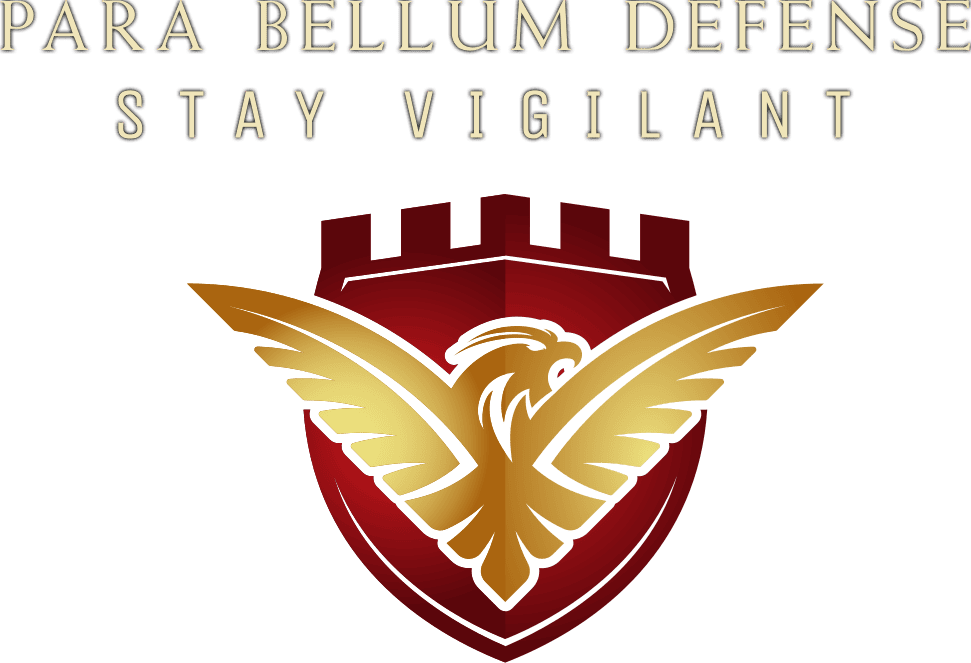



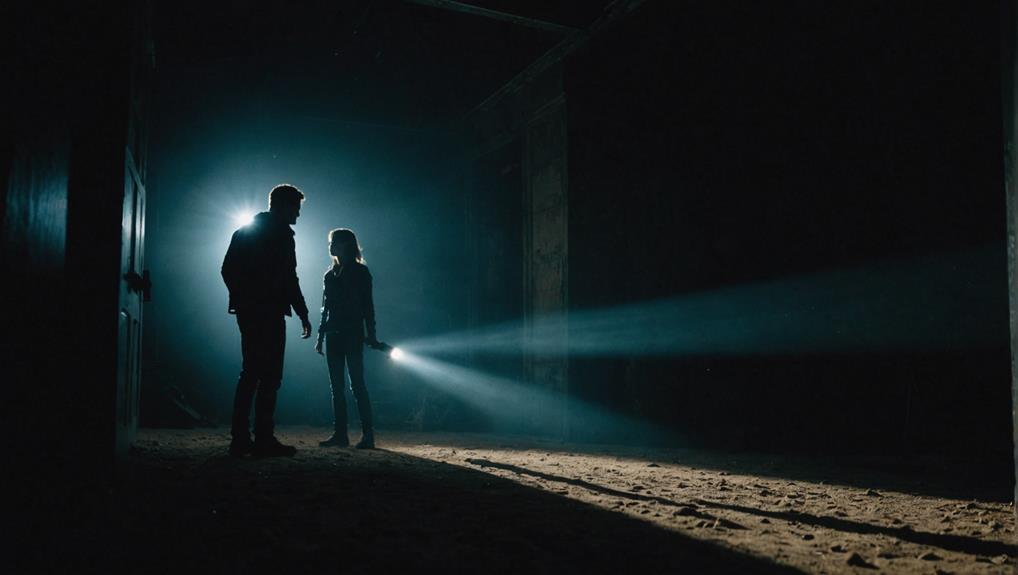
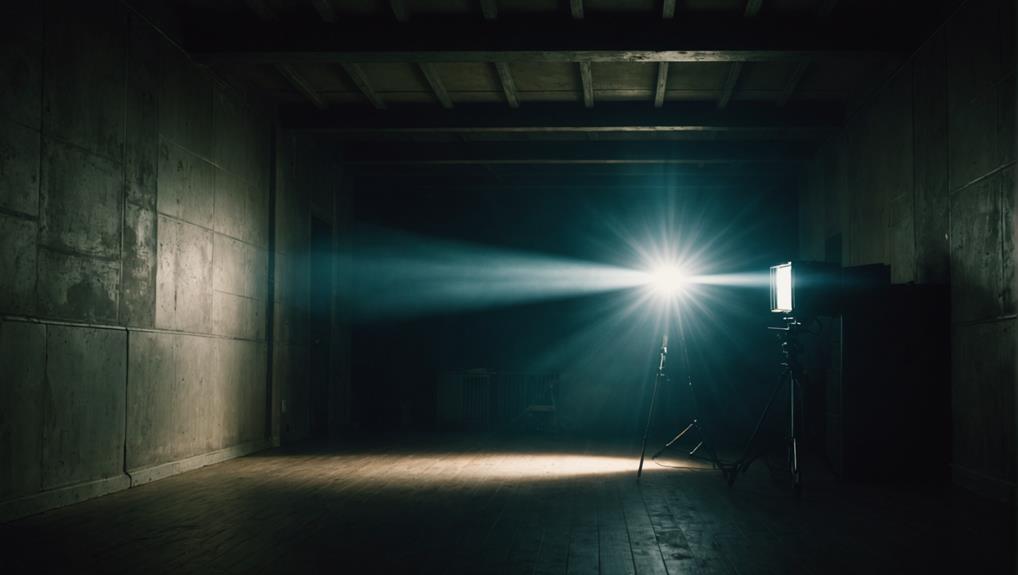
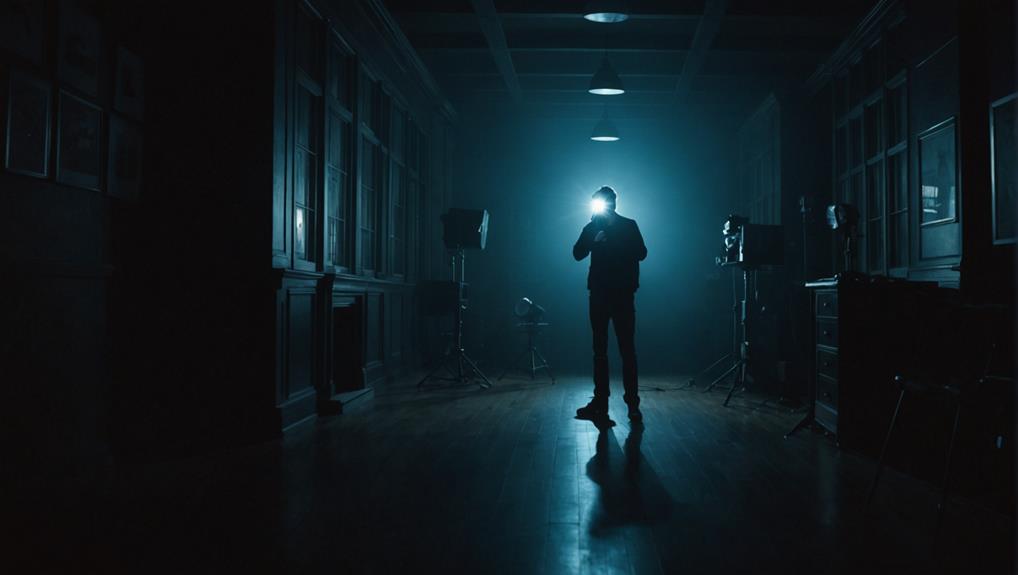
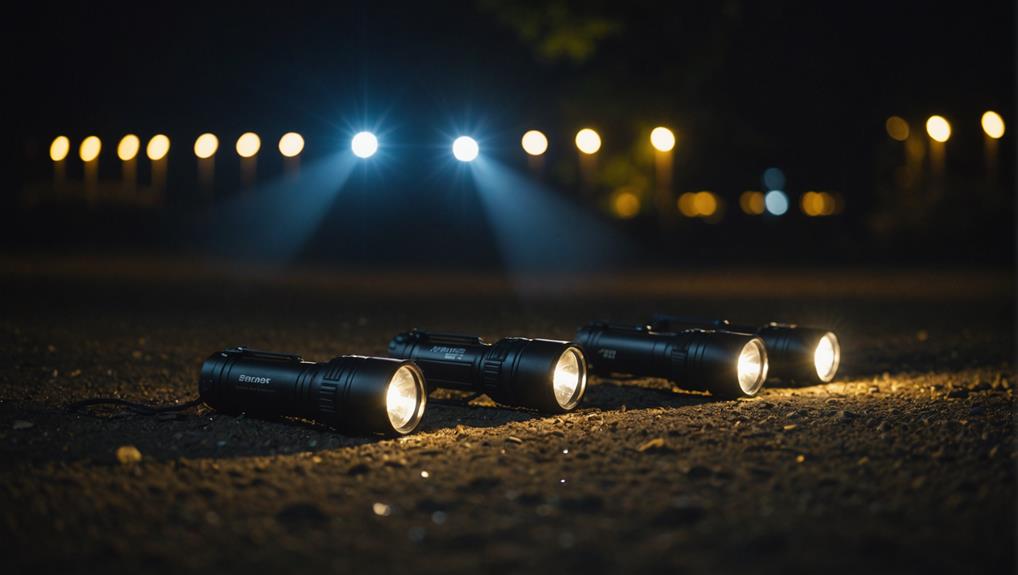

2 Responses